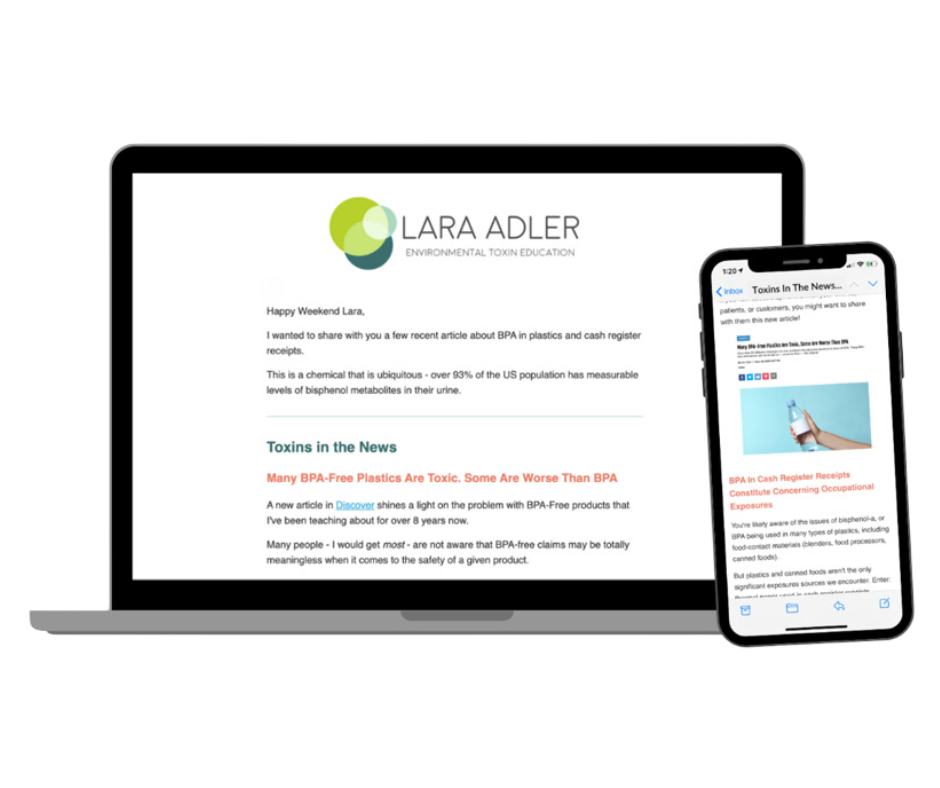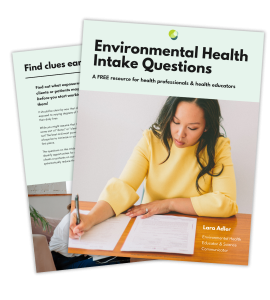A few weeks back I posted about Bisphenol-A – the chemical plasticizer that also has the misfortune of being a synthetic estrogen. (That just doesn’t sound good). This is a chemical that’s used, among a number of other places, in clear, hard polycarbonate plastics. Think: Brita Water Pitchers, food processor bowls, and yes, your fancy and much loved VitaMix or Blendtec blenders.
BPA’s history as a synthetic estrogen goes way back to the 1930’s where it was actually used as pharmaceutical hormone before being replaced with the more potent and way more horribly devastating chemical DES. But BPA found a new purpose in the 1940’s & 50’s in the manufacture of a new type of plastic – polycarbonate. Fast forward a bunch of decades, and look – we’ve got polycarbonate everywhere!
In the late 1990’s it was determined that BPA was leaching from plastic baby bottles, yet thanks to industry pressure and government inaction, nothing was done. It wasn’t until the spring of 2008 that the shit hit the fan, so to speak, for the BPA/polycarbonate plastic industry, and since then state governments have been pushing for partial and outright bans of BPA in children’s products, including baby bottles, and the public has been demanding safer, non-toxic options.

In an attempt to appease a justifiably pissed off public, makers of polycarbonate plastic products rushed to create BPA-Free versions. And they did. Hundreds of hard, polycarbonate plastic containers started bearing stickers proclaiming they were BPA-FREE! And everyone bought them (and still are). People were tossing out their trusty Nalgene bottles and buying new ones – this time BPA-FREE.
But we may have pushed too hard, too fast in our desire to be rid of this chemical and it’s hormone disrupting effects, because what we’re left with after the BPA-FREE parade left town, is a big public-perception mess to clean up. The BPA-FREE claim makes people feel good, safe, protected – even if they don’t know what BPA is to being with. “If the label is promoting that’s it’s “free” of something… I guess that something must have been bad, right? So now it’s better!”, the logic seems to flow.
Turns out Bisphenol-A isn’t the only Bisphenol in the family… there are apparently 15 (bisphenol-F, bisphenol b/c/e/f/g, and so on). In the rush to be rid of BPA, many manufacturers simply swapped one bisphenol chemical for another, so rather than use BPA, they’re now using BPS, or BPF. These bisphenols, as well as other chemicals used in the production of plastics can exhibit what is called “estrogenic activity” – this is the indicator that it being a hormone disruptor, and this is what we want to test for – not whether it just has levels of BPA in it.
A study published in the journal Environmental Health Perspectives in July of 2011 showed that almost all commercially available plastics (read: the kinds for sale in stores) showed levels of estrogenic activity, including items labeled BPA-free. In some cases, the BPA-free plastics had higher levels of estrogenic activity than plastics with BPA! Urgh!

So yeah, your new Nalgene bottle, Vita-Mix Blender, or baby bottle might technically be BPA free, but that doesn’t exactly mean it’s not going to expose you to the synthetic estrogens you’re working to steer clear from. The whole reason we’re trying to avoid BPA is not because it’s BPA – but because of what BPA is capable of doing: blocking or mimicking our hormones. So why then aren’t we testing for these qualities, rather than just testing for one of the chemicals capable of doing this? I don’t have an answer to this, sadly.
But, all this brings us to the question of “what do I do??” We do what we can, and that means we do the following:
1) We don’t get lulled into buying BPA-FREE labeled products. They’re no indication of safety.
2) We avoid all canned foods, heating foods in plastic, storing foods in plastic, or eating with plastic*
3) We treat the polycarbonate that we do have carefully. This means hand washing in warm (not hot) soapy water, using the soft side of the sponge instead of the scrubby side, not using your Vitamix (BPA-Free or not) for hot, oily, acidic foods (like tomato soups – use a stainless steel immersion blender for those!).
4) We drink out of glass and stainless steel, not plastic
5) We take comfort that the uber healthy foods we’re putting into our Vitamix are going to keep us strong and healthy, and hopefully mitigate any of the impact of the estrogenic compounds that we are exposed to.
6) We, if we feel so compelled, buy a (not as powerful, I know) blender with a glass carafe, or pester Vitamix to bring back their stainless steel one!
Hopefully that will clear up some of the confusion over the BPA-FREE mess – it’s not clear by any stretch, but we do our best, aim for glass and stainless when we can, and when we can’t…. we’re just more careful!
*not all plastics contain BPA. While not very accurate, flipping the product over and looking for the number 7 in those chasing arrows symbol will at least point you in the right direction. This is simply a catch-all category. Not everything marked 7 is polycarbonate plastic, and but all polycarbonate plastic is a 7. (it’s like that rectangle/square bit from elementary school!). As far as plastics go, BPA is typically only found in hard, clear plastics – so you won’t find it in say, sandwich bags, or your bottle of ketchup – there are other chemicals to contend with in there.



Loved your article! Its very informative for anyone who may not be
aware of the dangers of plastics. My vote is to pester VitaMix to bring back
the stainless steel carafe–then I can get a new lid 🙂